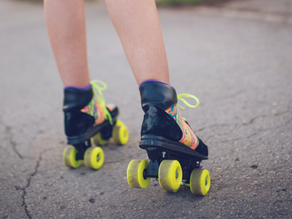
Why Exercise is important
Exercise is important to everyone for many reasons, yet for those with a hypermobility syndrome (HMS) exercise can be key for condition management. This includes rarer types of HMS such as osteogenesis imperfecta, though the type of exercises that will be suitable will be dependent on how severely the individual is affected.
Exercise can help improve the following general health areas:
-
Cardiovascular fitness
-
Alertness
-
Sleep quality
-
Weight control
Exercise can also have condition specific benefits:
-
Improve proprioception (the ability to sense the position of a joint) and balance
-
Improve muscle strength
-
Stabilise hypermobile joints
-
Maximise bone density, preventing or slowing the progression of osteoporosis
-
Reduce chronic pain
-
Enhance wellbeing
-
Reduce stress and anxiety
-
Increase independence
Practical considerations when exercising
Individuals with a hypermobility syndrome are often more susceptible to injury including dislocation and subluxations. In addition, comorbidities such as postural orthostatic tachycardia syndrome (POTs), orthostatic hypotension and fatigue means that the average approach to exercise does not always work. Although it can be harder for individuals to find the right exercise program for them, there are many different pathways to try where you can listen to your body and find what works best for you.
Exercise comes in many forms and can be done almost anywhere, consider the following suggestions:
-
Exercising whilst sat down. Examples include chair dancing, sitting on a gym ball or wobble cushion and wheelchair-based activities
-
Housework can count as exercise if done in a controlled manner, utilising core strength
-
Control of posture using your core and spinal muscles
-
Pilates
-
Sports, the gym and physiotherapy led exercise
-
Any movement that is completed with control can be a form of exercise
Although the right exercise for an individual is vital to hypermobility management, it should be noted that individuals with a hypermobility syndrome should consider caution with certain types of exercise so as not to compromise joints including:
-
Contact sports
-
High impact exercises such as running and jumping
-
Acute twisting
Utilising strategies such as splinting, or taping can help with injury prevention and management. These approaches may be appropriate to support a joint during exercise and help to improve proprioception (the ability to sense joint movement and location), as always speak to your healthcare provider regarding these techniques.
If you have a rarer connective tissue disorder which has specific risks such as osteogenesis imperfecta, Marfan syndrome or vascular Ehlers Danlos Syndrome it is important to discuss exercise with your health care professionals as there may be additional risks.

Ideas from the community
“Walking netball - same as normal game but you aren't allowed to run or jump so less damage to joints. Enjoy being part of a team and it's quite relaxed compared to playing in a proper netball team.”
Claire Harris
“I like to play Wii sports resort and a few of the not horrible Wii fit games, especially the balance games.”
Hilary Klee
“Recumbent cycling!”
Susan Lawton
“Joining in with the housework and cooking but only when I have the energy to move properly. Also dancing in my seat when pretty much any music comes on.”
Christine Lowe
"Adapted Qi Qong, taught to me by woman that specialises in teaching Tai Chi to kids with disabilities. Free form tree of life that I can do sitting or standing is my favourite & reminds my body that gentle movement is fun, helps with balance & proprioception. 5 animal hand exercises I can do anytime & anywhere and have helped strengthen & stabilise them.” –
Karen Merryweather
“I enjoy strengthening my arms and core muscles by gently pushing myself in my manual wheelchair. It has taken time, but I can now independently explore quiet trails while my friends and family walk beside me.”
Steph Reynolds
“Stand up Paddleboarding - because I can adapt to energy levels and pain - sit, kneel, or stand, flat water or coastal. Low impact and high conditioning - definitely gets my vote.
I do lots of different things though - I discovered variety means better overall condition and less overuse injuries - so a bit of Pilates, bit of modified yoga or low impact Jazzercise, bit of kettlebell, bit of cycling and walking. Move little and often and love it when you do.
Elizabeth Maxim
I was amazed how I could do movements in a swimming pool that were totally impossible on land. Squats and resistance exercises. I did a few 30min sessions in the pool with a personal trainer to learn some moves and now have built up 30mins a week to 30mins every couple of days which is definitely helping with my walking and standing.”
Josie Toole
“Wild swimming. I can’t do much, so choose gentle access and gentle currents, but just being ok, the water feels soooooo good. I’m horribly allergic to chlorinated pool water as well so it’s a double win.”
Amber Ennis
“I adore archery. Most sports are out of the question for me now and I took a huge knock to my confidence. I felt weak and unfit. Archery was one of the few things I could do as a sport that didn’t absolutely destroy me. Covid pulled me off the archery range, but luckily, I had space to make a mini range in the garage and it’s been a god send. It helps me feel strong, confident and is great for improving focus. It’s also slow paced and solo so I can go at my pace without disturbing anyone else”
Sammie Bradley
Article by the HMSA
Last Updated November 2021
Please email info@hypermobility.org for the list of references used.






